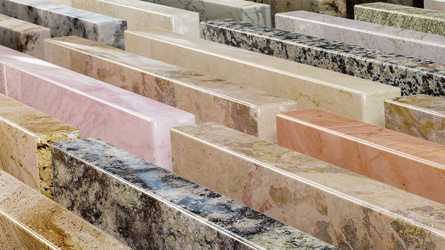The Impact of Countertop Colors on Kitchen Design: How to Make the Right Choice

Countertops are one of the most visible features of any kitchen. The colors and materials you choose for your countertops can set the tone for your whole kitchen design. Making the right countertop color choices is key to creating a kitchen you will love. According to the good folk at Bedrock Quartz, the countertops you pick today need to stand the test of time as trends come and go.
Neutral Countertop Colors
If you think that there is a chance you will sell your home in the future, neutral countertop colors are a safe bet. They appeal to the widest range of buyers no matter the trends. Classic options like white, gray, and black quartz or granite countertops pair well with most cabinetry and flooring options. Beige, biscuit, and cream countertops also keep things simple. Neutrals let you change up accent colors easily over time without having to redo the counters.
Bold and Vibrant Hues
If you want to make a decor statement, consider vibrant countertop hues like red, green, blue, or yellow. These colors make for an energetic, fun kitchen. Just know that bold counters may turn away some buyers. Nevertheless, if you plan to stay put for years, go for the gusto. But limit vibrant counters to an accent wall or island. Keep the rest of the space neutral to keep costs down if you redo the room.
Warm and Inviting Tones
Warm brown and tan countertop colors give off a natural, earthy feel. Options like brown quartz, oak butcher block, and tan granite help kitchens feel cozy and lived in. Warm-toned counters pair well with cabinets ranging from white to ebony depending on the look you want. Their versatility makes them ideal for many kitchen aesthetics. Just know that lighter warm tones show messes and wear more easily.
Cool and Crisp Shades
On the other end, cooler countertop colors like gray, blue, black, and white feel sleek and modern. Counters in these mid to dark shades disguise messes better, too. However, all-white kitchens can feel sterile if not balanced out. So consider pairing crisp white countertops with warm wood cabinetry or accents. This creates visual interest and balance.
Countertop Materials Matter Too
The exact same color counter can give off quite different vibes depending on the material. For example, gray granite feels traditional, while gray quartz counters with speckles or swirling patterns come across more contemporary.
Butcher block wood counters impart an artisan, hand-crafted look. But the same color painted on ceramic tile gives off more of an earthy, organic vibe. Keep material and aesthetic goals in mind as you zero in on colors. What feels on trend today may not in 5-10 years from now if you plan to stay put.
Making the Final Decision
Choosing the perfect countertop hues for your kitchen requires balancing personal style, lifestyle needs, resale value and the room’s existing elements. Gather inspiration from photos, then use color swatches. Use tape to map out potential counters in the actual space. And don’t overlook the cabinet and hardware finishes either. Rows of warm wood cabinets support different countertop choices than sleek white lacquered cabinetry.
Conclusion
It’s important to visualize how potential counters will look with your cabinets, flooring, appliances and other finishes. You may love the idea of black granite counters, but they could feel too dark and heavy with dark wood cabinets or floors. The key is taking the time upfront to experiment with colors and materials. This helps avoid buyer’s remorse and ensures you feel truly confident in the aesthetic direction your new kitchen counters will lead you down for years of food prepping and memories ahead.
